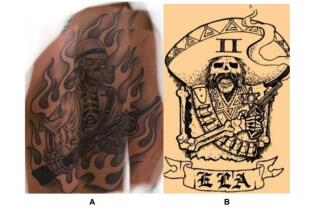Gang Tattoos Are Not Just Skin Deep
- Share via
I remember vividly the day Superior Court Judge David O. Carter took me into the Santa Ana courtroom and had me sit on the bench with him. The courtroom was filled with people of every ethnic background--men and women, many handcuffed, some accompanied by relatives but most alone. This was a world I had never seen before.
The judge asked who in the filled-to-the-brim courtroom wanted their tattoos removed. About a dozen stepped forward. The mother of one young man pleaded to have him selected for tattoo removal so he could start his life over again. Another man who looked no older than 16 (but who I later learned was well into his 20s) nervously moved to the front of the room--with a scared-to-death look on his face. I subsequently discovered from Carter that when gang members try to leave a gang they are “jumped out” by other gang members--which means they may be beaten to death.
Carter asked about half a dozen of these “candidates” to accompany him to his private chambers. When we got there, the really hard questions began. Are you on drugs? Let me see your arms. How many of you have been shot or stabbed? (Everyone raised their hands, even Carter, who was shot in Vietnam.) Why do you want your tattoos taken off? What gang did you belong to and how will you deal with the “traitor” label that you will have?
The first gang member that we treated was from the Bay Area, and his treatment was sponsored by one of our concerned “donors.” We removed his tattoos in several sessions and sent him back to San Francisco. A year later, he was back on the streets, back in a gang, back on drugs and probably tattooed again.
The sad irony of the plight of many of these people is that they’re in a “Catch-22.” Tattoo removal can cost more than $10,000 in the real world--and many need jobs not only to fund the treatment but also to provide the stability in their lives. Yet they can’t get jobs because of the tattoos. The heroic effort (recently documented on this page) of the Probation Department, Carter and the Beckman Laser Institute physicians and staff, whose time is mostly donated, is only half the battle.
I challenge the business people and individuals of Orange County to provide jobs. Give these people a chance; give this program a chance. We want to continue with the program, but we want it to be successful. For every job that is provided, we will enroll a new patient; and I will twist as many physicians’ arms as is necessary to volunteer their services.


